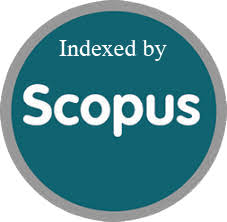A Smart System to Ease Occurrence of Bedsores
Abstract
The occurrence of bedsores in Ghanaian hospitals, elderly homes or care homes is especially high among patients or people who are incapacitated and cannot move or turn on their own, and who happen to remain in a particular posture for a very long time. Patients in coma, those operated on and for that matter in critical state, and patients confined to wheelchairs are primary examples. Constant pressure on some parts of the body leads to the occurrence of pressure sores or ulcers. This paper seeks to implement a Bedsore Easing System (BeSoSys) that integrate several embedded hardware components, a database and software to reduce the occurrence of bedsores. These embedded hardware components include the Bed Device Unit (BDU), the Pocket Device Unit (PDU), a pressure or weight sensor, a temperature sensor, and an inflation-deflation device. The BDU is fitted into the bed of the patient or on the surface of skin contact of the patient. The PDU is assigned to nurses or caretakers to serve as an alarm system for patient repositioning depending on situation. All activities in the Bedsore Easing System are logged into a database for future references. A bedridden patient exerts constant pressure on the bony protrusions of the body, and this causes bedsores. It was found out during the research that in Ghana, the nurses or caretakers used to turn and massage patients at some random time intervals as a way of preventing bedsores. This traditional way of turning and massaging patients is not only tedious but also ineffective. This paper seeks to provide easy, better, and effective solution to ease bedsores. The BeSoSys intends to prevent the occurrence of bedsores hence the alleviation of bedsore complications
Downloads

Copyright (c) 2021 Benjamin Kommey

This work is licensed under a Creative Commons Attribution-ShareAlike 4.0 International License.
Authors who publish with this journal agree to the following terms:
- Authors retain copyright and grant the journal right of first publication with the work simultaneously licensed under a Creative Commons Attribution-ShareAlikel 4.0 International (CC BY-SA 4.0) that allows others to share the work with an acknowledgement of the work's authorship and initial publication in this journal.
- Authors are able to enter into separate, additional contractual arrangements for the non-exclusive distribution of the journal's published version of the work (e.g., post it to an institutional repository or publish it in a book), with an acknowledgement of its initial publication in this journal.
- Authors are permitted and encouraged to post their work online (e.g., in institutional repositories or on their website) prior to and during the submission process, as it can lead to productive exchanges, as well as earlier and greater citation of published work (See The Effect of Open Access).



.png)
.png)
.png)
.png)
.png)
